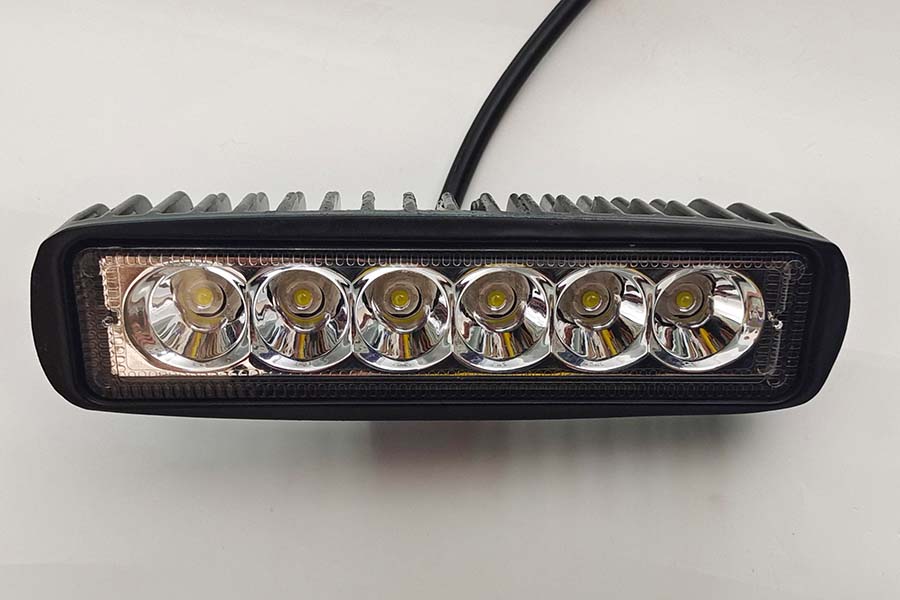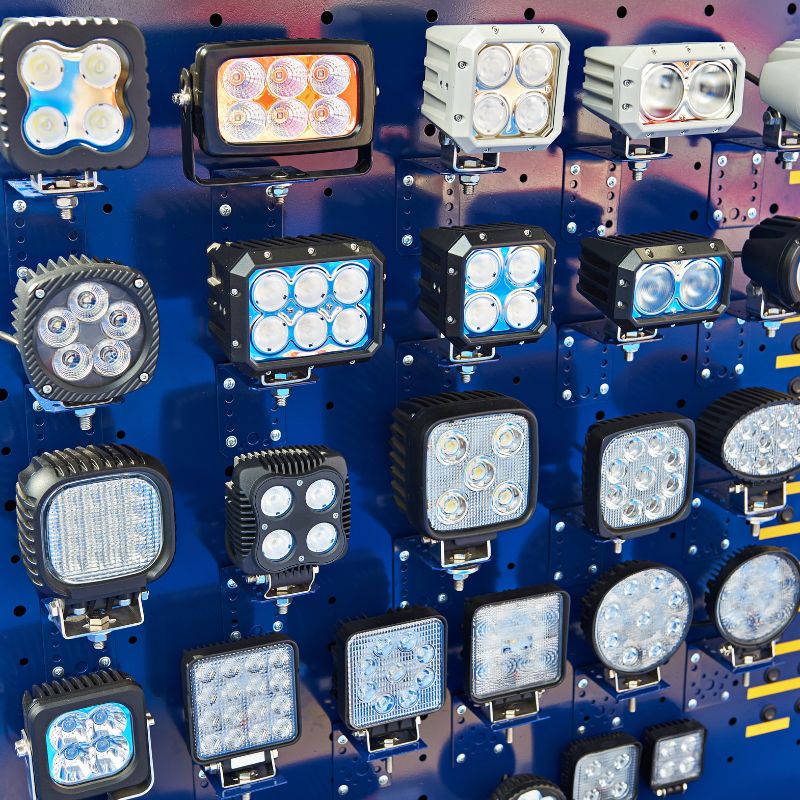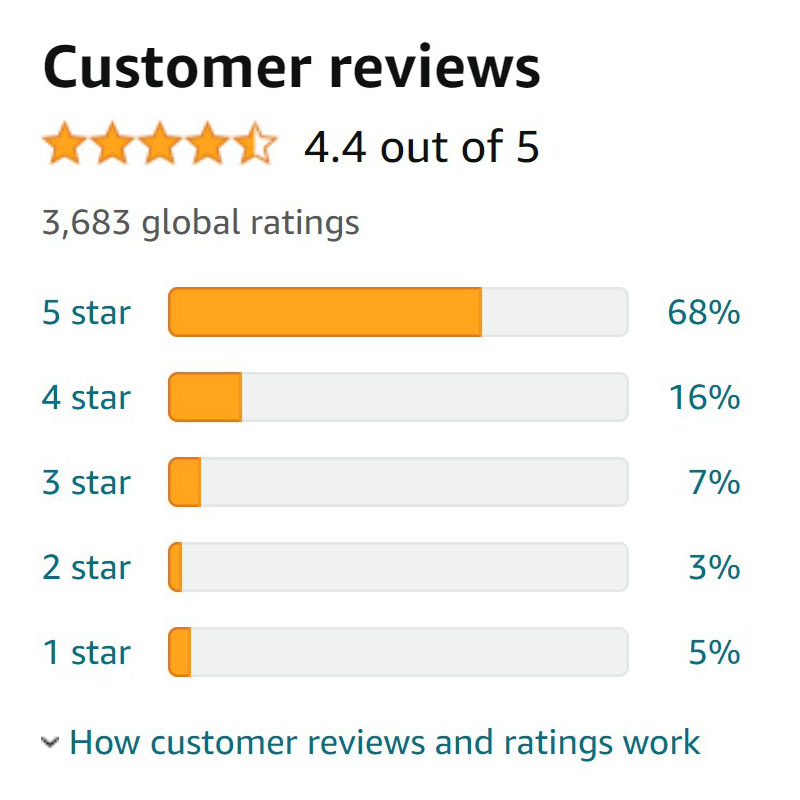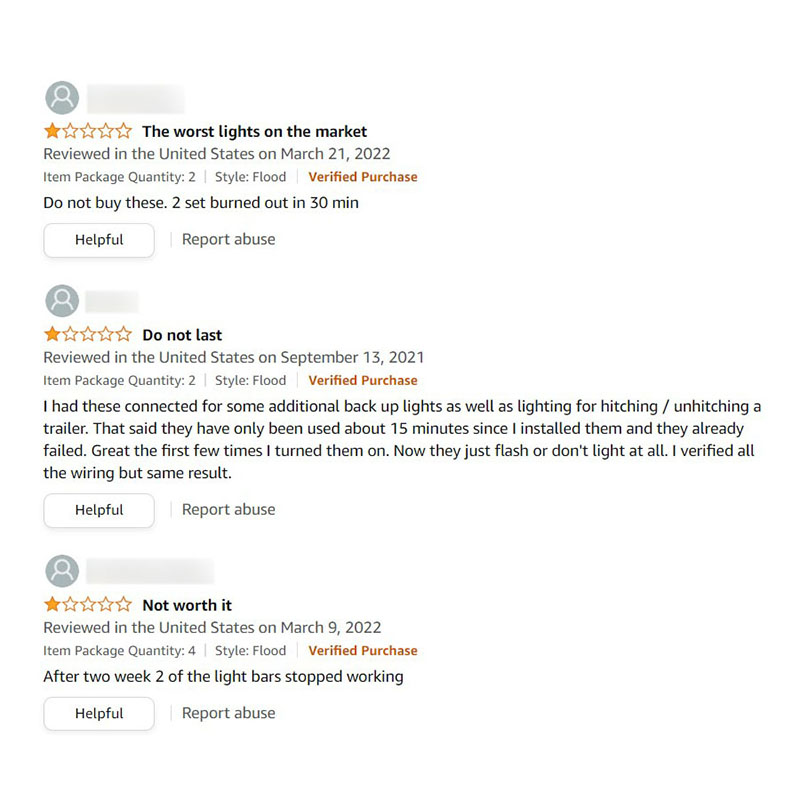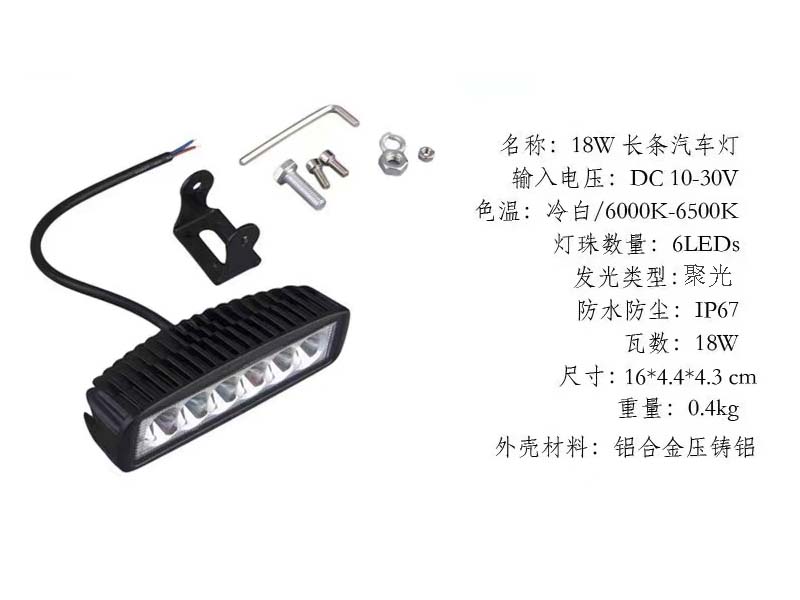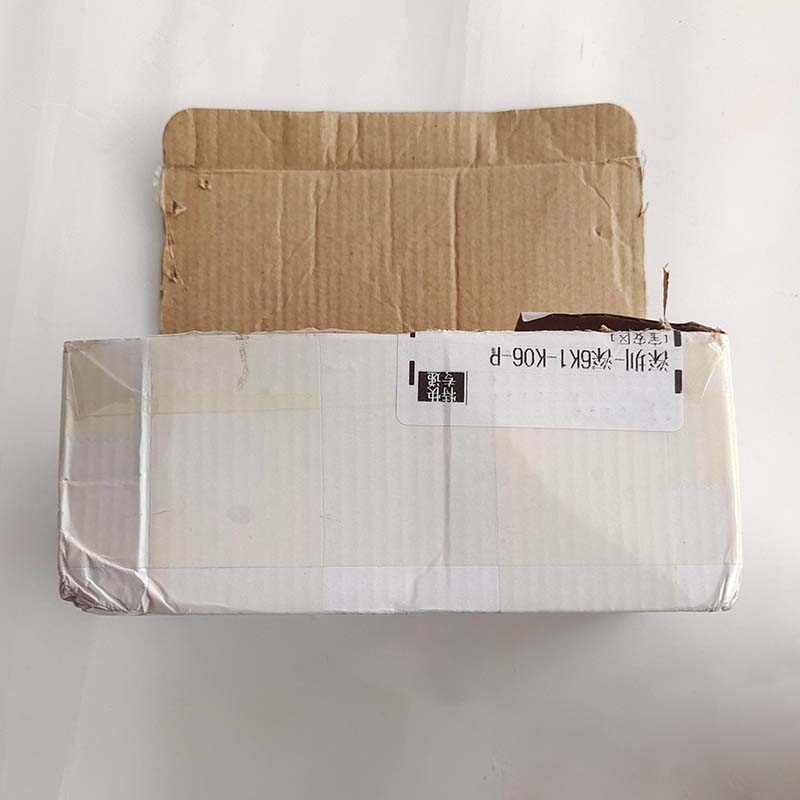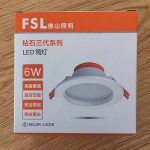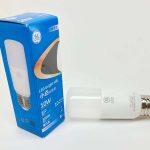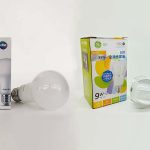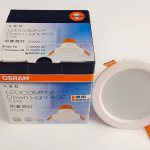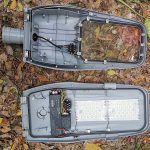LED work lights have many different designs.
One of the most popular types is for off-road vehicles.
Such work lights come with various designs, features, and functions.
Users install them on all kinds of vehicles.
Just to name some of them: cars, trucks, motorcycles, boats, ATVs, golf carts, etc.
BackMorning is a third-party quality inspection company focusing on the LED lighting industry.
We’ve been testing different LED lights from various manufacturers for some famous brands.
Meanwhile, from time to time, we buy LED samples from the market to learn how the market is doing.
LED work lights happen to be one of the applications we’ve gained some experience before.
Therefore, we decide to write this post based on a sample in our hand.
We will reveal some truth about their quality and give you some tips.
They will be helpful for you in choosing good quality LED work lights and manufacturers.
So, stay with us.
Overview of niche market off-road LED work lights
This product line is different from other indoor and outdoor LED lighting products.
It became dramatically more popular to install them on vehicles around 2015.
This niche market is smaller and has no global household names like Osram, Philips, GE, etc.
Most of the sellers are brands that are comparatively new, probably less than 10 years.
And don’t have a team with excellent engineers – electricians, quality engineers, etc.
Meanwhile, neither the brands nor their OEM factories have professional instruments for testing their products.
- The investment won’t only require money spent on instruments but also the training, skills, and experience of their people.
For this reason, they are not comparable to those global household names or third-party quality inspection companies.
That means, it is not easy to find good-quality LED work lights and manufacturers.
- Especially, if you own a brand for off-road LED work lights, better to work with a quality inspection company to verify some of the fundamental parameters.
At least, you will be able to know the true parameters of your products.
You will be able to gain better competitiveness by building it on solid quality.
User experience with off-road LED work lights
We have given you an overview of this niche market and you’ve had a foundation for understanding.
Next, we will tell you what we’ve noticed about the user experience on major online retail sites.
If you check some of the best sellers on major online retail sites, quite often you will see something like the screenshots below.
A hot sale LED work light can have thousands of reviews.
Probably 1/3 of them are not completely happy with what they buy.
If you sort those reviews by their topics, you will notice quality is a major issue that users complain about most often.
A typical issue is the LED work lights – which are supposed to work – but don’t work.
Theoretically, a well-made LED light can last for more than a minimum of 10,000 hours.
That already equals more than 5 years if you use the lights based on an average of 4 hours every day.
Unfortunately, it’s not uncommon for users to complain theirs last for only weeks, days, and even hours.
What sellers usually tell you
1). Adjectives without numbers
As a common practice, LED work light sellers advertise with some adjectives.
- Typical examples are super bright, long life-span, high performance, etc.
- They don’t use numbers to indicate the critical parameters of the lights.
Ask the sellers for numbers, if possible.
Particularly important, if you are going to work with a manufacturer.
2). Incredible values
Even though some of them show numbers, the numbers are too good to be true.
- For example, they claim the lights have a lifespan of over 50,000 hours.
- That means more than 30 years, based on an average working hour of 4 hours every day.
It is understandable such numbers are theoretical based on a formula to estimate.
But this value is already much more than what some of the best brands usually claim.
Don’t blindly believe those numbers.
Some values are only for marketing purposes.
The marketing people pick a number just to make their claim look reliable.
3). Insufficient critical parameters
Theoretically, the sellers should tell buyers some of the basics.
However, they don’t indicate the core functions of the LED work lights.
- Alternatively, they will tell some other things that are less important.
For example, the shapes of their lights are beautifully designed.
And for example, the lights are compatible with various vehicles.
Remember, you buy these off-road lights to illuminate the roads at night.
What you need is essentially the light itself.
So, you should know the fundamental parameters that define the quality of the light.
If you haven’t had an idea about what the fundamental parameters are to be asked, keep reading.
We will explain them one by one with a sample that we’ve tested.
It is a sample that we buy from an online retail store.
It has some values on its web page.
- Input voltage range, color temperature, number of LEDs, IP rating, wattage, dimension, and weight.
This package box below is what we receive.
There are no parameters on its sales package.
Not a single number is printed on it, and no user manuals either.
But it doesn’t matter.
- The importance is not what values they claim to be.
- But what the values the light actually has.
And we can find them out through our spectrum test with our integrating sphere.
Test results:
You see 2 identical test report pages above.
This is because the first page is for the results when the light works for 1 minute.
And this second page is for the results when the light works for 30 minutes.
The performance of LED lights can go down after working for a while.
So measuring results twice will offer a more reliable comparison.
1). Wattage
If you have experience in the LED lighting industry, you will know that the term Lumen is more suitable for evaluating the brightness of LED work lights.
The term Wattage is unquestionably still essential for determining brightness.
However, it’s inaccurate for comparing the brightness of different LED lights.
An LED light with a rated wattage value of 5W is not necessarily brighter than another light with 4W.
Just like a car burning more fuel doesn’t guarantee it produces more horsepower.
Its horsepower also depends on its engine’s efficiency.
It is not good for the seller to ignore the critical number of Lumen.
They should have indicated this critical parameter.
Either on the web pages or the sales package.
You will see some sellers indicate a rated value of 18W for its wattage.
And they add a note like 6 LEDs x 3W.
It means their light has 6 LED chips and each one is 3W.
So, the total wattage is 18W.
The sample has an applicable input voltage range DC 10 – 30V.
Here are the tested values that we’ve got:
- DC 12V: The tested value is 9.1W at 1 minute, only 50% of the rated wattage value 18W
- DC 24V: The tested value is 10.3W at 1 minute, only 57% of the rated wattage value 18W
- DC 24V: The tested value is 10.2W at 30 minutes, only 56% of the rated wattage value 18W
What does that mean?
- It means, you spend the money and only receive 50% of what the seller claims.
- Will you be happy with this buy?
Tips:
Ask the seller for a number for the wattage.
If you buy LED work lights from a manufacturer, test the lights and see their real values.
Either a simple multimeter or a basic desktop DC power supply will do.
2). Total Lumen
As mentioned above, better to use the term Lumen to evaluate the brightness of an LED work light.
Unfortunately, many sellers do not indicate this parameter for their lights.
It doesn’t matter, since the importance is not what they say, but what the true value is.
Our test results indicate the tested Total Lumen values are as below:
- DC 12V: The tested value is 474.6 Lumens at 1 minute
- DC 24V: The tested value is 505.1 Lumens at 1 minute
- DC 24V: The tested value is 493.9 Lumens at 30 minutes
As mentioned above, the seller of our sample doesn’t indicate a number for this parameter.
There are some other similar LED lights on other web stores.
Their appearance is identical to our sample but not the same sellers.
Some claim theirs has a Lumen of 1,800.
Technically speaking, will that be trustable?
As a quality inspection company, we can’t say definitely that value is impossible.
But we’d say we don’t believe their difference will be so big.
3). LM/W
There is another useful term for evaluating the quality of LED lights: LM/W.
It is the ratio between Total Lumen and Wattage.
We use it to evaluate the energy efficiency of LED lights.
The bigger number the better.
Below are the results obtained from our sample.
- DC 12V: The tested value is 52 at 1 minute
- DC 24V: The tested value is 48.7 at 1 minute
- DC 24V: The tested value is 48.3 at 30 minutes
We have to say, these results are far from satisfactory, based on our experience in years.
Usually, the top brands have values for this parameter bigger than 100.
LED technologies have improved a lot in last years.
So, their energy efficiency should have been much better than that.
- The best of the best even push this performance to 150 – 160.
- And even more, Philips breaks 200 lumens per watt barrier in 2015.
Therefore, we have to say, a number about 50 for this parameter is quite disappointing.
Why do we emphasize this parameter so much?
- Because for most installations, off-road LED work lights use the batteries of vehicles for power supply.
- Sometimes, a vehicle owner may turn off the engine and keep the lights on.
Unlike using the lights at home, you can have literally unlimited power supply.
The batteries of cars, motorcycles, and boats are limited.
Definitely better to have lights with higher energy efficiency on them.
Bottom line, at least the off-road LED work lights should have energy efficiency that matches the average numbers.
4). SDCM
The term SDCM is used to evaluate the color shift among LED lights.
The smaller the number is, the better.
The widely applicable standard value is 6 in the LED lighting industry.
If the value is smaller than 6, we can conclude the light meets the requirement.
If this value is bigger than 6, we can conclude the light is not good regarding this aspect.
The sample has tested values for this parameter as below.
- DC 12V: The tested value is 16.6 at 1 minute
- DC 24V: The tested value is 16.8 at 1 minute
- DC 24V: The tested value is 16.5 at 30 minutes
All the 3 tested results are almost 3 times of the recommended value.
If the SDCM of the lights are bigger than 6, that means their color shift will be too big.
When you install more than one light in a row, you may notice the lights look different.
- For off-road applications, we can say this value is important.
- This is because usually vehicle owners won’t install only one of this light.
Typically, they install at least 2 of them – one for the left and the other for the right.
Meanwhile, many also install 4 or even more on their cars and trucks.
- It’s not good to make your vehicle look like using lights of different colors.
5) Color Temperature
Color temperatures are important for LED lights.
And for off-road applications, color temperatures have big influence on visibility.
Generally, 2,700K appears more like yellow and it’s visible in a longer distance.
Meanwhile, 6,000K appears more like blue and it’s visible in a shorter distance.
This sample claims to have a color temperature of 6,000K.
The test results are as below:
- DC 12V: The tested value is 6,854K at 1 minute, 14.2% more than the rated 6,000K
- DC 24V: The tested value is 6,874K at 1 minute, 14.6% more than the rated 6,000K
- DC 24V: The tested value is 6,908K at 30 minutes, 15.1% more than the rated 6,000K
We prefer not to say whether 6,000K is good for off-road application.
But the test results are already far beyond the acceptable maximum tolerance value of +10%.
We can conclude the sample fails, even based on the design of its own.
Conclusion
We have told you many important points about the quality of off-road LED work lights.
This is an interesting niche market that should have had many good products.
Unfortunately, it’s not easy for users to distinguish between good and bad quality.
Just like the sample that we’ve tested.
It may fail every fundamental parameter during a spectrum test.
But think positive.
That also means opportunities.
It means less difficult to compete if you can offer quality that lives up to expectations.
And no worries about lacking the fundamental instruments, skills, and experience.
You don’t have to invest in them again by yourself.
You can consider a third-party quality inspection company like BackMorning.
We can work together to assure the quality of off-road LED work lights.
Thanks for reading!

